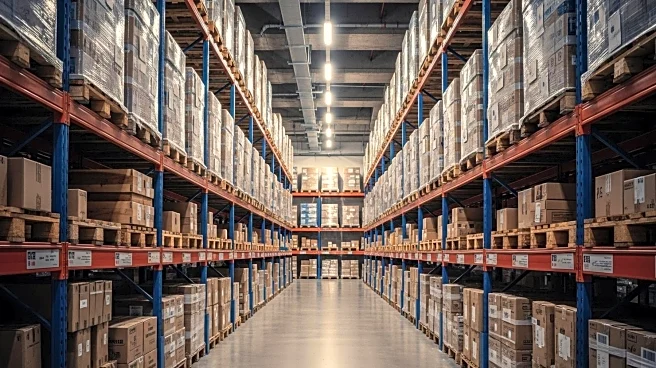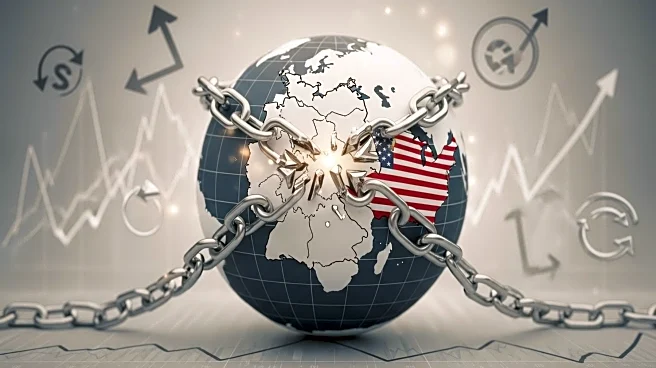What's Happening?
The GEP Global Supply Chain Volatility Index, a key economic indicator, has shown a decline to -0.39 in August from -0.35 in July, indicating increased spare capacity as global supply chain activity cools. This index, based on a survey of 27,000 businesses, highlights significant regional differences. In North America, supply chains are operating near full capacity as companies stockpile raw materials and components to mitigate tariff-driven shortages and delivery delays. This trend is particularly evident in the US consumer goods sector, including industries such as food and beverages and household products. Conversely, Asia's index fell to a three-month low, with purchasing activity weakening in China's consumer non-cyclicals sector, and Europe continues to struggle, with Germany's basic materials sector faltering and UK manufacturing facing deeper contraction.
Why It's Important?
The current supply chain dynamics underscore the ongoing impact of tariff uncertainties on global trade. For US companies, stockpiling is a strategic response to potential shortages and price inflation, reflecting a shift towards resilience and diversification in supply chain management. This approach may lead to increased costs and operational complexities but is seen as necessary to maintain stability. The broader implications include potential disruptions in consumer goods availability and pricing, affecting both businesses and consumers. Additionally, the cooling of global supply chain activity could signal economic challenges, with manufacturing sectors in Europe and Asia showing signs of contraction, potentially impacting global economic growth.
What's Next?
As tariff uncertainties become a structural reality, companies are expected to continue investing in resilience strategies, such as diversifying suppliers and enhancing demand sensing capabilities. The next release of the GEP Global Supply Chain Volatility Index is scheduled for October 10, 2025, which will provide further insights into the evolving supply chain landscape. Stakeholders, including businesses and policymakers, will likely focus on adapting to these changes to mitigate risks and capitalize on opportunities for growth and efficiency.
Beyond the Headlines
The ongoing supply chain volatility raises ethical and strategic questions about global trade practices and the balance between cost efficiency and resilience. Companies may need to reassess their reliance on specific regions for manufacturing and procurement, considering geopolitical tensions and environmental sustainability. This shift could lead to long-term changes in global trade patterns and supply chain structures, influencing economic policies and corporate strategies.













